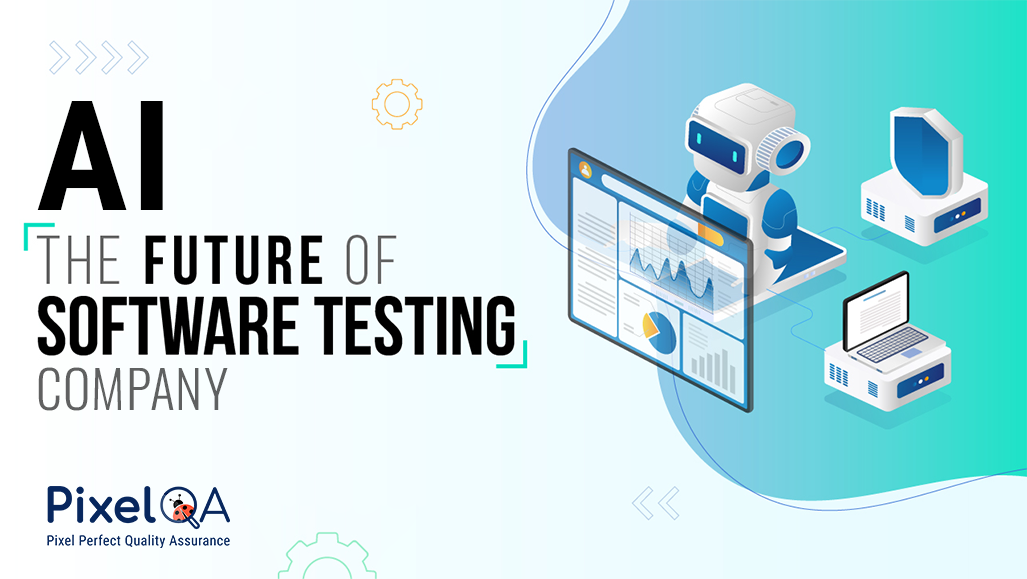
In a precision, speed, and scalability-led industry, software testing is at the cusp of a revolutionary change powered by the advent of Artificial Intelligence (AI). What was once considered to be an arduous and manual-intensive process is now focusing on automation and smart systems to drive efficiency, identify sophisticated bugs, and automate release cycles.
As companies compete to deliver quicker, smarter, and more robust digital products, AI is emerging as an indispensable companion in the testing ecosystem of software companies. By integrating AI with Software Automation Testing Services, software testing firms are reducing human error and increasing productivity and opportunities for innovation and QA.
1. From Manual to Intelligent Automation
Legacy testing was based extensively on manual scripting, with QA engineers writing, running, and updating test cases between various environments. Although tools such as Selenium and JUnit made the process more efficient, they were still based on static scripts and regular human intervention.
AI pushes it one step ahead. With the assistance of predictive analytics, NLP, and ML, AI-based testing platforms can generate test cases automatically, prioritize them according to risk, and evolve them over time. For example, Testim, Applitools, and Mabl utilize AI in order to comprehend application behavior, auto-heal flaky tests, and dynamically optimize test coverage. This change enables QA groups to invest less time on writing and updating scripts and more time on exploratory testing, edge cases, and product quality.
2. Smarter Bug Detection & Root Cause Analysis
One of the most thrilling advantages of AI in software testing is that it has the capability to detect issues rapidly and with a higher degree of accuracy than traditional means. Through pattern recognition and history-based learning, AI has the ability to uncover hidden defects, flag errors, and predict future failures beforehand.
AI-powered testing tools are able to track the cause of a defect through several layers of the tech stack—UI, API, database, and server—so that developers are able to quickly remedy problems. This helps reduce debugging time significantly and saves small problems from blowing up into large-scale outages after deployment. AI models, which are trained on historical defect data, can also rank bugs by business impact and severity, allowing teams to make evidence-based decisions around what to address first.
3. Test Optimization & Risk-Based Testing
It is practically impossible to test all possible combinations in a sophisticated application. This is where AI comes into the picture. AI can go through application logs, user paths, and usage behaviors to determine which test cases are most important and where there is greatest risk. This is referred to as risk-based testing and sees to it that limited testing resources are being used optimally.
In addition, AI is able to carry out test suite optimization by eliminating redundant or outdated test cases, enhancing test run time without sacrificing coverage. Such a feature is particularly important in agile and DevOps environments where quick iteration is the priority.
4. Continuous Testing in CI/CD Pipelines
As software development moves towards continuous integration and continuous delivery (CI/CD), real-time, continuous testing is crucial. AI is necessary to automate and expedite this procedure.
AI can evaluate code changes, anticipate which modules will be impacted, and automatically start pertinent tests in contemporary DevOps pipelines. This saves time and computer resources by only running the tests that are required. Additionally, AI makes intelligent alerts possible, which helps developers concentrate on real failures by cutting down on false positive noise. Faster feedback loops, quicker releases, and better-quality products are the outcomes of this.
5. Natural Language Testing and Democratization
The use of NLP-based platforms that let non-technical users create test cases in plain English is a more recent trend. The process has become more democratic as software testing is now more accessible to business analysts, product owners, and others.
Tools such as TestCraft and Functionize use natural language processing (NLP) to convert plain requirements or user stories into executable test cases. This facilitates better collaboration and alignment on testing goals by closing the communications gap between non-technical and technical teams.
6. AI as a QA Partner, Not a Replacement
Even with the increasing abilities of AI, it is important to note that it will supplement QA experts instead of replacing them. Even more so in the case of exploratory testing and usability testing, contextual understanding, creativity, and intuition are still needed from a human perspective. QA teams will function more effectively and more intelligently with the assistance of AI as a supporting partner that automates mundane tasks and gives suggestions.
7. Challenges and Considerations
While the benefits are compelling, the adoption of AI in software testing is not without challenges:
- Data Quality: AI models require clean, diverse, and relevant datasets to function effectively.
- Skill Gaps: QA teams need to upskill in areas like ML, data analysis, and automation to leverage AI tools effectively.
- Tool Maturity: Not all AI testing tools are production-ready; some may struggle with real-world complexity.
- Ethical and Compliance Risks: Like any AI system, test automation must be transparent and auditable to meet compliance standards.
Companies must address these challenges through training, pilot programs, and carefully selected AI tools that align with their testing strategy.
Conclusion
AI in software testing firms is about transformation, not just automation. AI is enabling new levels of productivity and quality assurance by making testing quicker, smarter, and more flexible. Software testing needs to change as businesses adopt digital acceleration. Businesses can decrease time-to-market, boost reliability, and guarantee that software products fulfil the highest performance and user satisfaction standards by incorporating AI into the QA process.

_638839265689864196.png)